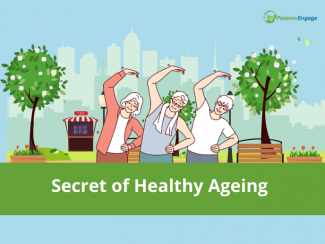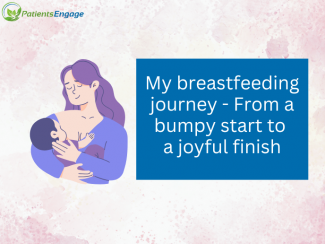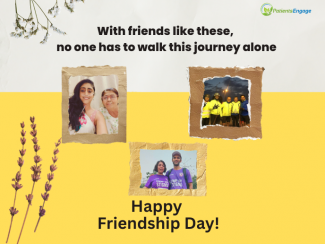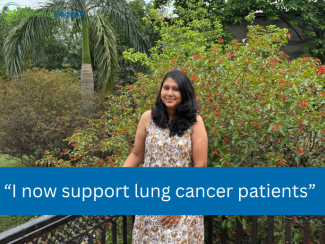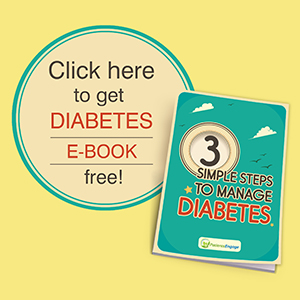
Ishika Gupta was born with a rare muscular dystrophy condition Lama 2, which naturally shattered her parents. This is a story of how the parents Shruti and Raghav Gupta found the strength to fight on and make Ishika’s life as comfortable as possible.
Please tell us when your daughter was diagnosed.
Shruti: Ishika was diagnosed with LAMA2-related congenital muscular dystrophy when she was just 4 months old. The journey to a diagnosis was not too long, but confusing, and filled with moments that no parent should ever have to face.
What were the early symptoms? What made you go to a doctor?
Shruti: From the beginning, we noticed that Ishika is not lifting her hands, lifting her head, or rolling over. She had low muscle tone and a frog-leg posture that worried us. Her movements were light and slow, and her limbs often lay flat. A parent’s instinct always knows when something is off. Also, Ishika’s aunt is a physiotherapist who also pointed out the same and it ultimately nudged us to look deeper.
What tests were done for the diagnosis? How did the diagnosis come about?
Shruti: Ishika’s pediatrician recommended Occupational therapy initially and mentioned if we see some improvement, then it’s ok. Otherwise, we need to run the tests. After 20 days, they recommended a CK level test, MRI, and eventually a genetic test. It was the genetic report that confirmed our fears—LAMA2 congenital muscular dystrophy. The ultra-rare and most severe form of CMD. It is difficult to forget May 2024 when the diagnosis came, and the doctor from Sir Ganga Ram Hospital called us to meet in person. Ishika in my hand, tears rolling, Raghav (my husband) came down from office, my sister-in-law (Ishika’s aunt), my father-in-Law (Ishika’s grandfather) were all accompanying me, and when they handed over the report, our hands were trembling. LAMA 2 CMD in bold letters was visible which was looking like an alien word and my whole world came crumbling down.
What was your reaction to the diagnosis? How and when did you break it to your family and friends?
Shruti: The ground beneath us disappeared. We were crying in the hospital. The doctor put my daughter on my shoulder as if to say, your life is finished, go home and live with whatever you have. He said, continue with the physiotherapy, there is no other cure and try living a normal life. My parents and my mother-in-law were at home worrying. We cried for nights. Initially, like a typical Indian Family, we thought of hiding it but then we all agreed to face it head on. Relatives started visiting our home sharing their support. Our elder daughter, Mishika, almost 9 years old now, was incredibly mature and kind. She didn’t say much - she just hugged us tight and even fed us when we were not in a state to eat. It was more heart wrenching seeing Raghav (he is a 6-foot guy who has always stood by me through thick and thin. I can win a war with him beside me), or our parents crying (while consoling us). Everyone was supporting or consoling each other. The most astonishing part which I still remember is that when everyone was crying or worrying, our beloved Ishu/Ishika used to smile at everyone. Even her pediatrician said that her brain is fine as she used to react normally, almost as if her cognitive abilities are all okay. We were of course worried about the future.
Our social life is also different now. Some friends stayed. Some quietly walked away but we’ve built a beautiful new community of other parents walking this path. We laugh, cry, and lift each other’s spirits.
What happened next? (specialist referral, course of treatment etc.)
Shruti: We were told that physiotherapy should be done on a daily basis. There’s no cure, but we were told early intervention is the best way forward. From that day on, we started building a new world for Ishika—one filled with therapies, and an army of people who would help her bloom. In parallel, we started checking the internet if anyone is working on Lama2 cure. We read about a doctor in Boston who has published a paper on Lama2 and desperately we started writing to her over email, LinkedIn, speaking to known people in Boston as how to reach out to her, as she seemed our only hope.
Has your daughter been put on medications?
Shruti: There are no specific medications for LAMA2 yet, and no treatment either. But Ishika takes supplements and supportive meds for immunity and growth.
Has any course of treatment been advised?
Shruti: Physiotherapy, Occupational therapy has been our pillars. Regular follow-ups and close monitoring are essential. In fact, physiotherapy is part of our daily routine. It is like a prayer for us—it’s our way of telling Ishika’s body, “We are with you and believe in you.” She has started holding the neck, started sitting independently for some time.
What are the immediate things that you have to ensure about your daughter and what are the precautions you need to take?
Shruti: We are always on high alert, especially for respiratory infections. In January’25, she had to be admitted to the ICU because of an upper lung collapse. That’s when we realized how careful we needed to be. Positioning is crucial—we use knee binders to prevent contractures and AFOs (Ankle Foot Orthosis) to help her stand. Fatigue, breathing trouble—every small sign must be watched.
Have you had to make some changes to your lifestyle because of this diagnosis?
Shruti: Everything revolves around her therapies, doctor visits, and care routines. But we keep going. Thanks to our parents’ support, Raghav and I manage our jobs while being there for Ishika. We don’t travel as freely as we once did, but we’ve found new joys in the small victories—like hearing her say “Mumma,” “Papa,” “Dada,”, “Nana” or “Kaka” (her name for Mishika). And when she playfully shouts at her Kaka, we feel warmth in our hearts. She is teaching us to go slow in life and not always run.
Have you thought about your daughter’s schooling? Please share your thoughts.
Shruti: Yes, we dream of her going to school, making friends, and learning like any other child. Her mind is sharp—she deserves every opportunity to grow.
What are your main challenges of handling a rare disease and what is your advice to parents who face similar challenges?
Shruti: The hardest part is loneliness—rare diseases don’t have enough awareness or support in India. And there’s the painful stereotype that rare diseases only happen to poor families. We want to change that. That’s why we created LAMA2 India, a registered trust working for the cause. We have started a website https://lama2india.com/ . So far, we've connected with 52 families, and it is an astonishing number for even doctors or global researchers. We keep posting on social media. When all muscular dystrophy patients come together, the numbers will significantly rise—and we hope the government will finally listen.
To other parents facing this: You are not alone. Keep asking questions, keep fighting for your child, and most importantly—never stop believing in them or never lose Hope.
Jab tak Hope hai, insaan jeeta hai.
What kind of specialists do you consult and how often?
Shruti: Neurologist, physiotherapist (Ortho, Neuro, Pediatrics, DMI), occupational therapist, pediatrician—everyday/monthly.
Did you have to travel outside your city for medical treatment?
Shruti: No, since there is no cure, we have not travelled for medical treatment, but we do travel as Parent Advocacy group (Lama2India) to various rare disease events or go on vacations with family.
Do you have a family history of this condition? Was genetic testing done?
Shruti: No family history that is why it was more shocking. My gynae did not even recommend genetic testing during my pregnancy as we didn’t have any family history. Genetic testing of Ishika posts her birth confirmed the mutation and parent screening also confirmed the same.
Has it been difficult emotionally to cope with your condition?
Shruti: Yes, some days are easy and, on some days, even breathing becomes difficult. Even our therapists can tell when we walk in whether we are strong or struggling. Ishika’s smile, Mishika’s love, and the support of the family keep us going.
How has your family supported you?
Shruti: In every possible way. Mine and my husband’s parents, our brother and sisters are our pillars. My husband’s sister was with us in the hospital during diagnosis. From the beginning, she is doing physiotherapy for Ishika. She hasn’t admitted to us, but I guess Ishika has given her another purpose of life. She is the one who introduced us to Dr Mona Patel (Pediatric Physio who has seen CMD cases). The prevalence is 1 in 1 million and hence, majority of therapists have not seen such cases. As a result, anyone familiar with Lama2 becomes extremely important to us.
Our parents (Raghav and mine) are the 4 pillars we are standing on. My sister was in Hyderabad, my brother was in USA, and I have received daily calls, supporting messages, and we have cried together. Mishika, our elder daughter, has shown the wisdom of someone far beyond her years. Our close circle of friends and family is always there with love, prayers and hands to hold.
Raghav and my relationship have also evolved since the diagnosis.
Have you been to any counsellor for mental support?
Shruti: I am emotional yet practical. I have not attended the sessions as such, but I have spoken to a lot of people whose words helped me organize my emotions. Sometimes, we mothers forget how to breathe and that’s where family support becomes so important. Every time you show strength something will happen which will break your heart. It took us a good time to recover. It still hurts but now, we are trying to live one day at a time. We are working professionals and once you are in office, your mind is busy with work and that helps.
When did you break the news to your friends and distant relatives? How did they take it?
Shruti: It was gradual. Some responded with warmth, some didn’t know what to say, some stayed, some didn’t react or respond. Some behaved like we have committed a sin or it’s our past karma because of which we are suffering. I remember, a distant relative’s comment and my sister’s beautiful sentence: “She is still Ishika. The most magical child we have seen or seeing or will see in future”. She as a soul has chosen you as parents and you all are in close bond. She knows that only you can take care of her, that is why she is with you people. You are the chosen one.
Any personal anecdote you’d like to share with us?
Shruti: Mishika drew a picture of the two sisters holding hands by the sea during her drawing class and the topic was Happiness. She said, “Ishika is my happiness.” Even during my pregnancy, if anyone used to say maybe you will be blessed with a boy, she used to shout that it will be a girl. Ishika and Mishika share an amazing bond wherein they keep teasing each other like siblings do.
Hydrotherapy helps in muscular dystrophy. We live in New Delhi and the weather doesn’t support. My father-in-law has got a swimming pool with filter, temperature control setup in our house for Ishika. It is not a small pool; it is a good stainless-steel pool with lights and all to attract Ishika. He has never said no to any place or any therapy we need to go to. He drives us whenever necessary and when I am in office, he even takes Ishika to the therapy with a house help.
We are blessed to have a family where everyone is a support. Even Raghav’s grandmother who is 93-94 years old is there for us and Ishika calls her Amma. We are also very grateful to our house helps.
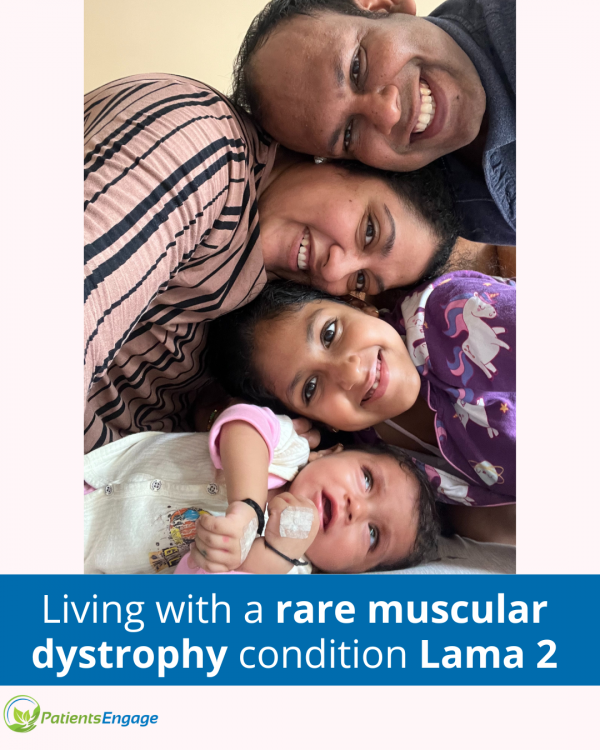
What worries you about the future?
Shruti: Her mobility, her independence but more than anything, I worry about the world being unkind to her. Sympathy is easy. Empathy is rare. People often treat rare diseases like bad luck or punishment from past karma. As parents, as family, we will always stand strong for Ishika, make sure she is loved, respected, and protected. Whatever may the situation be, we will hold fort for her.
What do you hope to achieve as an advocate?
Shruti: We want no family in India to feel alone after a LAMA2 or congenital Muscular Dystrophy diagnosis. We want better awareness, early diagnosis, support systems, and one day— treatment. We want our kids to be seen, heard and celebrated. There is ongoing global research on this but nothing in India as yet. Raghav and I attend the global monthly connect wherein researchers participate and share their research. We want more researchers, doctors to join in so that one day, India is also able to come up with treatment and cure of muscular dystrophy.
As told to Moyna Sen

